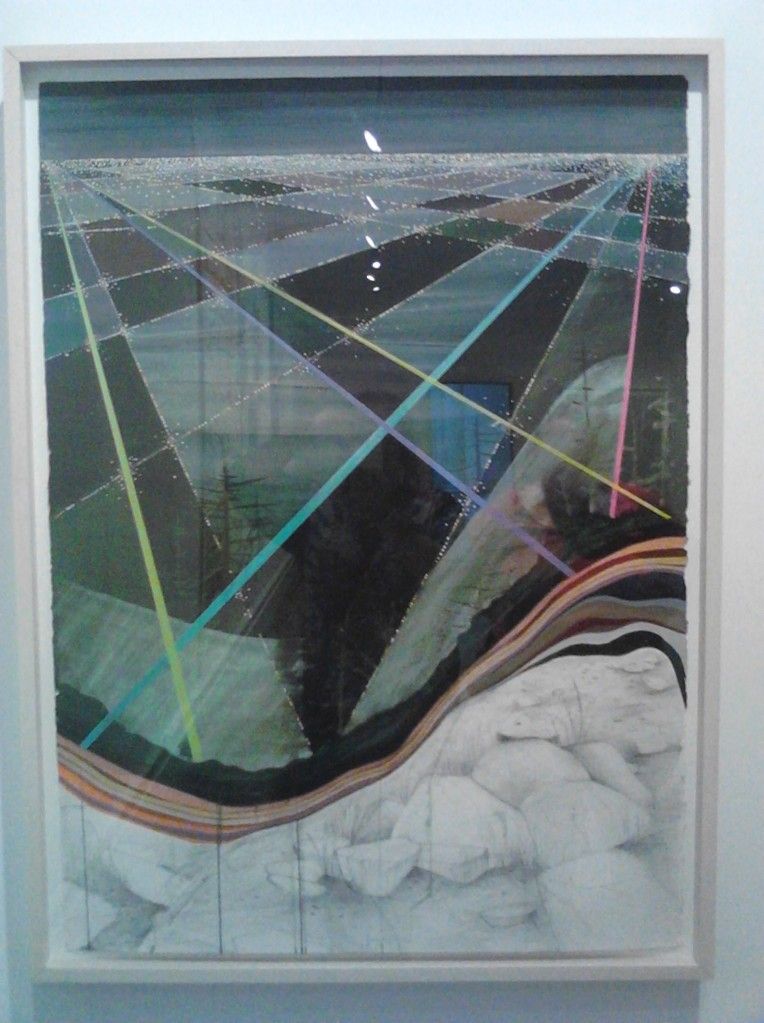A.) One art work that made an impact & impression on me was this one by Sonja Braas.

It is titled "The Quiet of Dissolution: FireStorm." (2008) I think it made an impact on me due to all the controversy surrounding the end of the Mayan calendar & all the crazy stuff that's supposed to happen in a few months. This particular piece is a photograph of the city of Los Angeles, with a strategically lit maquette in the background.
The next artwork that made an impact & impression on me was this one, "Maquette" by Sol Le Witt. (2005-2006)

It's the one we learned about from a video from a past assignment, & it was SO neat to see it in person! It is titled "Wall Drawing #1268: Staricase." The entire thing was done with graphite pencils, & you really can't appreciate the magnitude of it til you actually see it up close. It really is impressive, in size as well technique.
B.) The artworks that I felt a connection with are this one by Kai Althoff. It is untitled. (2008)

I really connected to this metal birdcage, with the lion in it, because I am very interested in astrology, & I happen to be a Leo. I really loved this particular piece.
I also connected with this piece by Lawrence Weiner. (1969)

I just thought it was such a powerful statement, & lately I've been feeling a little "marred" myself, so I was able to relate to this one.
C.) One artist I would like to learn a little more about is Glenn Ligon. I posted 2 shots of his untitled artwork to shot the entire piece, & then a close up to show the detail. (2002)


There is actually text in this painting from Baldwin's "Stranger in the Village," which was an essay written in 1953. I couldn't make out what it said, so my curiosity being what it is, I plan on looking in to the essay & finding out a little more about the inspiration for this painting.
Another artist I would like to know more about is Jason Middlebrook, & his work titled "Maggots on a Steak." (2008)
 |
I have no idea why this beautiful painting is titled "Maggots on a Steak," but trust me, it's enough to make me want to find out more about this artist. The cool thing about this piece is that the top half is acrylic paint, & the bottom is ink & pencil. I really liked the use of multiple materials.
I had a blast at the gallery. Havn't been there since I was in grammer school & it was such a good way to spend a Satruday afternoon with one of my friends.


